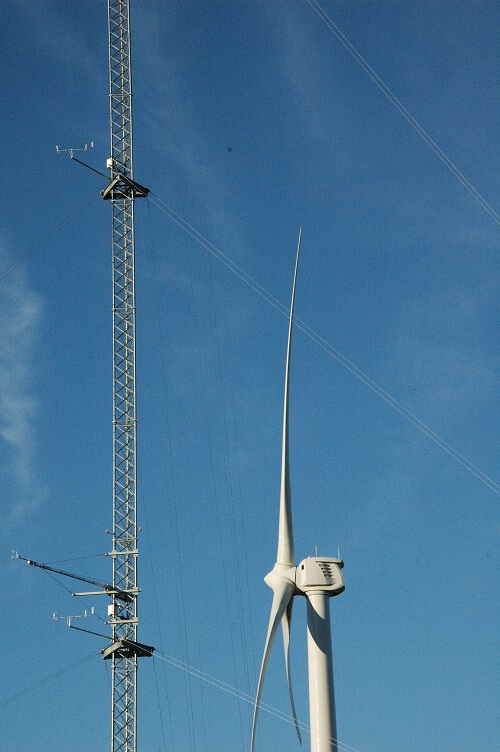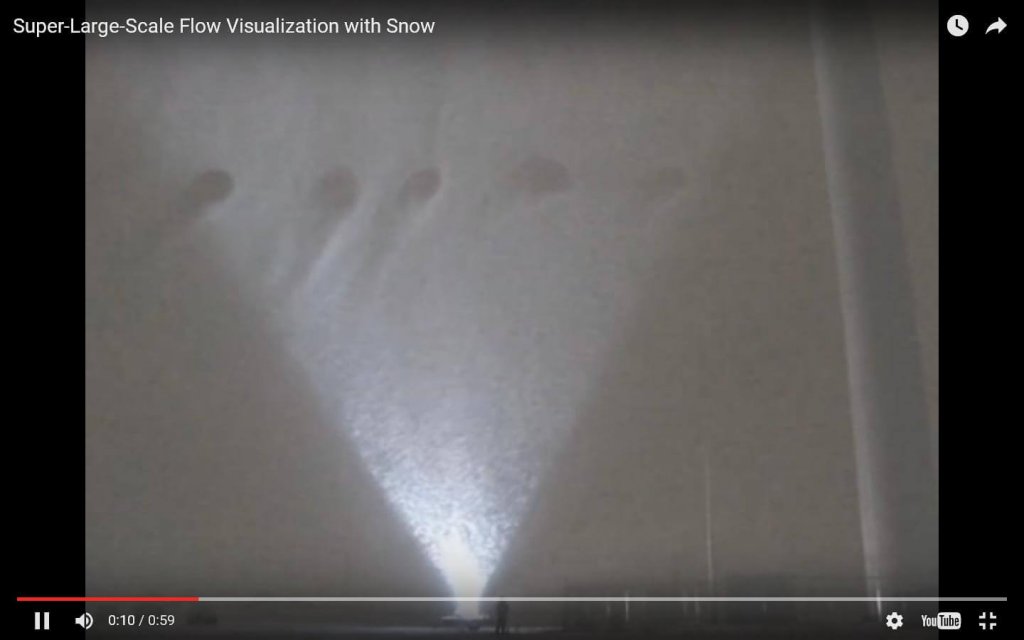Not all wind research labs are in Texas. One well-kept secret is the wind energy research program at the St. Anthony Falls Laboratory of the University of Minnesota. The lab owns and operates a field research station which features a 2.5-MW Clipper Liberty C96 wind turbine and 160m to the south of it, one of the tallest and well-instrumented meteorological towers in the country.

The 130 met tower works with a Clipper Liberty at the University of Minnesota’s facility in Rosemont. The tower sports four sonic anemometers, six cup and vane anemometers, six temperature probes, and more.
“Our 130-m tall met tower is equipped with four sonic anemometers from Campbell Scientific and six cup-and-vane anemometers,” says Chris Milliren, SAFL Associate Engineer. Sensors are located at elevations corresponding to the top and bottom of the rotor swept area, hub height and other elevations in between. Campbell Scientific assembled the full sensor system, programmed and tested it in their Logan, UT office and then shipped it to Minnesota to be installed on the met tower in Rosemount.,
The enviable setup was made possible by a DOE grant in 2010 that included purchasing the Clipper Liberty
. The turbine and met tower are located in Rosemont Minn., about 30 miles from the University of Minnesota campus.
Located 160m upwind of the wind turbine in the predominant wind direction, the met tower provides detailed measurements of the income flow profile. “We also have a WindCube, a lidar unit that can be placed anywhere. Grad students conducting wake studies often wait till the met tower is upwind and then place the lidar unit downwind in the wind turbine wake.”
Milliren’s team also installed a blade-sensor system on the Clipper wind turbine in collaboration with Sandia National Laboratories. “We have strain gages and accelerometers in each blade.” Equally impressive is that his team built a robot-like device to install accelerometers inside the blade. “We called it a robot on a stick. It rolls on six wheels and was pushed into the blades with a 110-ft pipe. When it reached the correct location, pneumatic cylinders were activated to glue the accelerometers in place. Each blade has two accelerometers located 35 meters from the hub, or at about 73% of the blade length.”
The turbine also has 20 strain gages around the base of the tower to measure overturning moments. “There is a correlation between power output and overturning moment, and wind speed and overturning moment, we can accurately measure that on our wind turbine,” he says.
Milliren says his job is to keep the site running – research ready, he says – for new projects. “Ongoing projects include one on wind-turbine acoustic noise, to better quantify the audible range and whether or not infrasound has an effect on humans. Another project is researching advanced, individual blade controls and ways to minimize wakes for the downwind turbines in wind farms.
Wind turbine foundations are another area of research. “A project starting soon will monitor tower and foundation conditions with an easily deployable, low-cost system to assess the health of a wind turbine foundation.” There is often concern about degrading foundation structural health after a severe storm or when soil conditions differ from expected. It is a great advantage to wind-turbine owners and operators to be able to determine whether a
foundation still meets OEM requirements years after installation. Even though the Clipper’s foundation is massive – concrete from 45 trucks and 44 tons of rebar – it moves. A sufficiently sensitive tilt meter can detect small amounts of rotation. Measurements of the strain gauges and tilt meter are made by two Campbell Scientific dataloggers.
Contact Milliren regarding research possibilities at milli079@umn.edu.

The picture, from a fascinating video (www.eolos.umn.edu/node/367) taken during a snowfall, shows the Clipper’s blade tips sweeping through the snow flakes and revealing tip vortices and their interactions. The setup includes a 5-kW spotlight, its generator, a convex mirror create a light sheet, and of course, the snowfall.
Filed Under: News





